
Consumer Insights
Uncover trends and behaviors shaping consumer choices today
Procurement Insights
Optimize your sourcing strategy with key market data
Industry Stats
Stay ahead with the latest trends and market analysis.
The Expert Market Research report, titled “Catechu Manufacturing Plant Project Report 2026 Edition: Industry Trends, Capital Investment, Price Trends, Manufacturing Process, Raw Materials Requirement, Plant Setup, Operating Cost, and Revenue Statistics” includes various aspects that are critical for establishing a catechu plant. These include infrastructure requirements, transportation requirements, utility specifications, and financial and economic analysis, among others.
The demand for catechu is increasing significantly as people are increasingly seeking organic and plant-derived ingredients in their cosmetics, pharmaceuticals, and food items. This shift is driven by a desire for healthier options and a growing awareness of environmental issues. Catechu, due to its various beneficial properties, is used in traditional medicine and oral hygiene products. As consumers become more health-conscious, the appeal of catechu in herbal remedies is expected to grow. These factors provide favourable prospects to invest in catechu plants.
Other elements to consider while establishing a catechu plant include raw material sourcing, workforce planning, and packaging. The production of catechu primarily relies on several key raw materials, with the most significant being khair wood, sourced from the Acacia catechu tree. This tree is predominantly found in India, particularly in states such as Uttar Pradesh, Bihar, Rajasthan, and Gujarat. The heartwood of the khair tree is essential for extracting catechu, which is then processed into various products like kattha and cutch. Other materials such as cashew husk and gambier are also used in some regions for producing kattha. Gambier, often imported from countries like Indonesia and Malaysia, is used alongside khair wood to enhance the production process. These raw materials play an important role in the production dynamics of catechu.
Moreover, to help stakeholders determine the economics of a catechu plant, project funding, capital investments, and operating expenses are analyzed. Projections for income and expenditure, along with a detailed breakdown of fixed and variable costs, direct and indirect expenses, and profit and loss analysis, enable stakeholders to comprehend the financial health and sustainability of a business. These projections serve as a strategic tool for evaluating future profitability, assessing cash flow needs, and identifying potential financial risks.
However, challenges such as supply chain disruptions, environmental factors, and regulatory changes may threaten supply stability for catechu production. For instance, fluctuations in raw material availability due to climatic conditions, such as droughts or excessive rainfall, can severely impact the sourcing of Acacia catechu wood. In regions like Uttar Pradesh, where most of India's khair wood is harvested, erratic weather patterns can lead to reduced yields. Additionally, regulatory changes aimed at promoting sustainable forestry practices may restrict harvesting in certain areas, further complicating the procurement process.
To combat these challenges, companies like Kanha Group have adopted a multi-sourcing approach by establishing relationships with suppliers across different states in India. Moreover, investing in sustainable practices can enhance supply stability. Forest Stewardship Council (FSC) promote responsible forest management and certification processes that ensure the sustainability of wood sources. By obtaining FSC certification for their raw materials, catechu manufacturers not only secure a consistent supply but also appeal to environmentally conscious consumers. These approaches helps maintain production efficiency in catechu facilities.
Catechu, derived from the heartwood of the Acacia catechu tree, is a versatile extract known for its astringent properties and use in traditional medicine. It serves as a food additive, dye, and tanning agent, particularly in South Asian cuisines where it is an essential ingredient in paan mixtures. Its extraction process involves boiling the wood and evaporating the resulting liquid to obtain the concentrated product. Historically, catechu has been used since ancient times in Ayurvedic medicine. Its use was notably advanced by Humphry Davy in the 19th century, who demonstrated its effectiveness in tanning compared to traditional oak extracts. The name "catechu" is derived from the Malay word "kachu," which reflects its regional origins.
Catechu appears as a brown to black crystalline substance with a melting point of approximately 32°C (89.6°F). It has a density of about 1.2 g/cm³ and is soluble in water (up to 10 g/L) and alcohol. Chemically, catechu is rich in tannins, comprising about 25% to 33% phlobatannin and 2% to 12% catechin, which contribute to its astringent effects. Its antioxidant properties are attributed to its flavonoid content, which can reach up to 15% by weight. Additionally, catechu reacts with acids to form coloured compounds, which makes it useful in dyeing processes and medicinal applications. The pH of a typical catechu solution ranges from 4 to 6, which indicates its mildly acidic nature.
The production process of catechu begins with the collection of raw material, where heartwood from Acacia catechu trees is harvested, typically from trees aged 10 to 15 years. The harvested wood is then cut into fine chips, usually about 1-2 cm in size, to facilitate extraction. In the extraction phase, approximately 25-27 liters of water are used for every 8-9 kg of wood chips, which are boiled for about 3 hours to release the catechu compounds. After boiling, the mixture undergoes filtration through muslin cloth to separate solid residues from the liquid extract.
The filtered liquid is then subjected to concentration by simmering in an open pan until it reaches a syrupy consistency, which can take several hours. Once concentrated, the mixture is allowed to cool for about 48 hours, leading to crystallisation of catechu. The resulting crystals are then washed with cold water to enhance purity. Following washing, the catechu is cut into uniform tablets using a wire cutter or knife during the tablet-making stage. These tablets are then dried in a shaded area for several days to remove excess moisture, ensuring a final moisture content of less than 10%. Finally, the dried catechu is carefully packed for distribution. The entire process typically spans around 45 days.

Read more about this report - REQUEST FREE SAMPLE COPY IN PDF
The catechu market growth is being driven by its diverse applications across various industries, including food, medicine, and textiles. As a natural astringent, catechu is widely used in Ayurvedic medicine for treating ailments such as diarrhea and throat diseases. In 2024, approximately 1.7 billion cases of childhood diarrheal disease have been reported. Moreover, diarrhea is responsible for about 13% of all deaths in children under five in India, amounting to an estimated 300,000 fatalities annually.
In the food industry, catechu serves as a key ingredient in traditional South Asian paan mixtures and licorice pastilles. Additionally, catechu's role as a vegetable tanning agent is significant as it is used in the leather industry and dyeing processes. Government reports indicate that approximately 100 kg of acacia chips yield about 14 kg of catechu, which contributes to its efficiency in production and use in industries. Furthermore, innovative uses such as dyeing vodka black by companies like Blavod Drinks Ltd. demonstrate the versatility of catechu in modern applications.
A detailed overview of production cost analysis that evaluates the manufacturing process of catechu is crucial for stakeholders considering entry into this sector. Furthermore, stakeholders can make informed decisions based on the latest economic data, technological innovations, production process, requirements of raw materials, utility and operating costs, capital investments by major players, pricing strategies, and profit margins.
Below are the sections that further detail the comprehensive scope of the prefeasibility report for a catechu production plant:
Market Dynamics and Trends: Factors such as use in paan mixtures are significantly affecting market conditions in the catechu sector. Understanding these demands and trends helps businesses align their production plans in the catechu market.
Profiling of Key Industry Players: Leading manufacturers like The Indian Wood Products Co. Ltd. and Botanic Healthcare are included in the catechu report. Recently, The Indian Wood Products Co. Ltd., a pioneer in the production of Katha (catechu) since 1919, has expanded its operations by setting up a new greenfield plant in Jammu, which became operational in July 2019. This move aims to increase their market share in the premium Katha segment to cater to the growing demand for this product traditional medicine and food products. Additionally, Botanic Healthcare has been recognized for its high-quality Acacia catechu extracts, which meet international industry standards and are used in diverse sectors such as pharmaceuticals and food production.
Economic Analysis: Capital expenditure (CAPEX) analysis provides stakeholders the knowledge about required investments in advanced technologies, efficient machinery, and necessary infrastructure. Investing in high-capacity mixing equipment, such as a continuous mixer or high-shear mixer, can improve production efficiency by 20-30%. Investing in energy-efficient systems, such as combined heat and power (CHP) systems could reduce energy consumption by up to 30%, as these systems use waste heat from production processes to generate electricity and provide heating.
Fluctuations in catechu prices are influenced by raw material availability. For instance, the price of khair wood, which is essential for catechu production, can vary based on local supply conditions and environmental factors. In regions like Uttar Pradesh, where the majority of khair wood is sourced, prices have been reported at around INR 32,194 per metric ton from the forest department, compared to INR 29,877 per metric ton in local markets. A rise in global demand for Acacia catechu gum also contributes to price fluctuations. Transport costs and labour charges associated with processing and distributing catechu can also lead to variations in pricing across different regions. As per industry reports of India, catechu is primarily sourced from states like Uttar Pradesh, Bihar, Rajasthan, and Gujarat. In Ghaziabad, the price for Acacia catechu powder is around INR 495 per kilogram and in Thoothukudi, prices can reach up to INR 1,050 per kilogram for red kattha used in pan masala.
Establishing a catechu manufacturing facility requires a comprehensive financial investment that encompasses various elements critical to the project's success. The following sections detail these components:
Projected profit margins and effective product pricing strategies improve overall profitability. Manufacturers might target a profit margin of around 20-30%, achieved through strategic pricing based on raw material costs and prevailing market demand. Effective pricing strategies should consider fluctuations in raw material prices and competitive positioning within the market.
The establishment of a catechu manufacturing facility must comply with guidelines set by the Food Safety and Standards Authority of India (FSSAI) for food safety, as well as environmental regulations from the Ministry of Environment, Forest, and Climate Change. Additionally, compliance with the Forest Conservation Act is essential for sustainable sourcing of raw materials. Compliance with these regulations not only ensures legal operation but also enhances product safety and marketability.
This prefeasibility report aims to equip potential investors and existing manufacturers with crucial insights to make informed decisions in the catechu industry.




*While we strive to always give you current and accurate information, the numbers depicted on the website are indicative and may differ from the actual numbers in the main report. At Expert Market Research, we aim to bring you the latest insights and trends in the market. Using our analyses and forecasts, stakeholders can understand the market dynamics, navigate challenges, and capitalize on opportunities to make data-driven strategic decisions.*
Get in touch with us for a customized solution tailored to your unique requirements and save upto 35%!
Basic Plan
USD 5,699
USD 4,844
Get Startedtax inclusive*
Raw Material and Product Specification, Raw material consumption, Process flow diagram
Machinery Cost, Working Capital
Utilities consumption, Operating cost, Overheads, Financing Charges, GSA , Packaging
Premium Plan
USD 6,799
USD 5,779
Get Startedtax inclusive*
Key Processing Information, Capital Investment Analysis, Conversion Cost Analysis
Raw material consumption and prices, Utilities consumption breakdown, By-Product Credit, Labour Charges Breakdown
Land and Site Cost, Equipment Cost, Auxiliary Equipment Cost, Contingency, Engineering and Consulting Charges
Enterprise Plan
USD 8,899
USD 7,564
Get Startedtax inclusive*
Key Processing Information, Capital Investment Analysis, Conversion Cost Analysis, Variable Cost Breakdown, Investing Cost Breakdown,
Breakdown of machinery cost by equipment, Auxiliary Equipment Cost, Piping, Electrical, Instrumentation
Cost of Construction, Plant Building, Site Development Charges
Land Cost, Development Charges
Dynamic Spreadsheet (Unlocked)
*Please note that the prices mentioned below are starting prices for each bundle type. Kindly contact our team for further details.*

Basic Plan
USD 5,699
USD 4,844
Key Processing Information
Raw Material and Product Specification, Raw Material Consumption, Process Flow Diagram
Capital Investment Analysis
Machinery Cost, Working Capital
Conversion Cost Analysis
Utilities Consumption, Operating Cost, Overheads, Financing Charges, GSA , Packaging

Premium Plan
USD 6,799
USD 5,779
All Contents of Basic Report
Key Processing Information, Capital Investment Analysis, Conversion Cost Analysis
Variable Cost Breakdown
Raw Material Consumption and Prices, Utilities Consumption, Breakdown By-Product Credit, Labour Charges Breakdown
Investing Cost Breakdown
Land and Site Cost, Equipment Cost, Auxiliary Equipment Cost, Contingency, Engineering and Consulting Charges

Enterprise Plan
USD 8,899
USD 7,564
Includes all Report Content
Key Processing Information, Capital Investment Analysis, Conversion Cost Analysis, Variable Cost Breakdown, Investing Cost Breakdown,
Equipment Cost Breakdown
Breakdown of Machinery Cost By Equipment, Auxiliary Equipment Cost, Piping, Electrical, Instrumentation
Land and Construction Cost Details
Land Cost, Development Charges, Cost of Construction, Plant Building, Site Development Charges
Dynamic Excel Cost Model
Dynamic Spreadsheet (Unlocked)
*Please note that the prices mentioned below are starting prices for each bundle type. Kindly contact our team for further details.*
Flash Bundle
Number of Reports: 3
20%
tax inclusive*
Small Business Bundle
Number of Reports: 5
25%
tax inclusive*
Growth Bundle
Number of Reports: 8
30%
tax inclusive*
Enterprise Bundle
Number of Reports: 10
35%
tax inclusive*
How To Order

Select License Type
Choose the right license for your needs and access rights.

Click on ‘Buy Now’
Add the report to your cart with one click and proceed to register.

Select Mode of Payment
Choose a payment option for a secure checkout. You will be redirected accordingly.
Gain insights to stay ahead and seize opportunities.
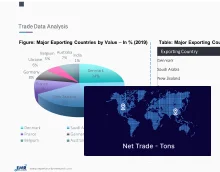
Get insights & trends for a competitive edge.
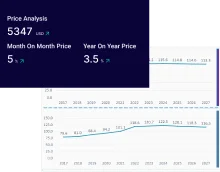
Track prices with detailed trend reports.
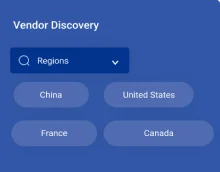
Analyse trade data for supply chain insights.

Leverage cost reports for smart savings
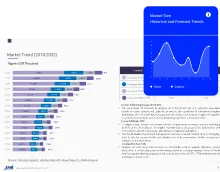
Enhance supply chain with partnerships.
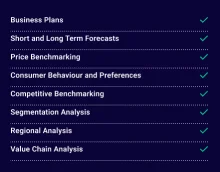
Connect For More Information
Our expert team of analysts will offer full support and resolve any queries regarding the report, before and after the purchase.
Our expert team of analysts will offer full support and resolve any queries regarding the report, before and after the purchase.
We employ meticulous research methods, blending advanced analytics and expert insights to deliver accurate, actionable industry intelligence, staying ahead of competitors.
Our skilled analysts offer unparalleled competitive advantage with detailed insights on current and emerging markets, ensuring your strategic edge.
We offer an in-depth yet simplified presentation of industry insights and analysis to meet your specific requirements effectively.
Share